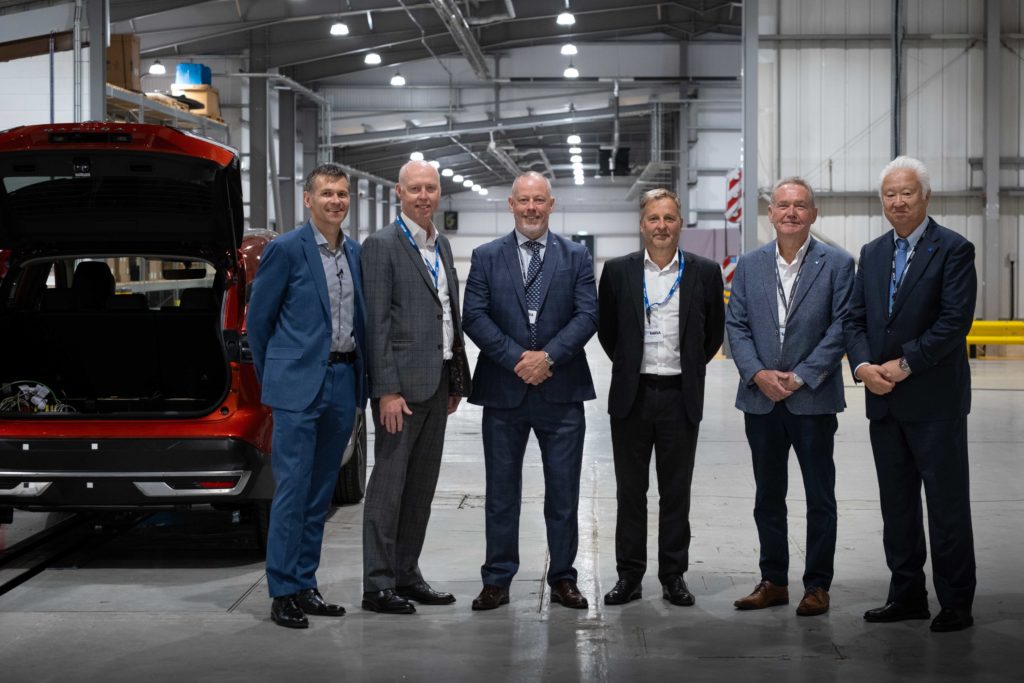New HORIBA MIRA Vehicle Development Capability will Boost Drive to Reduce Casualties on UK’s Roads

The UK is poised to make a significant contribution to slashing casualty numbers in car accidents with the opening of a new crash facility at the home of Europe’s leading automotive engineering consultancy, HORIBA MIRA. It is the first facility in the UK capable of testing frontal car-to-car impacts – one of the main contributors to death and injury on the roads.
The latest provisional government data tells us that 1,645 people were killed on Great Britain’s roads in 2023, with someone killed or seriously injured every 18 minutes. Car occupants are the greatest proportion of fatality statistics, accounting for 47% of these deaths. And according to Euro NCAP, frontal crashes are responsible for more deaths than any other accident type. Thus, increasing frontal accident testing to account for this type of accident is an important priority to improve safety for drivers, car makers, highways authorities and insurers.
To address this key road safety challenge, HORIBA MIRA – which has been conducting life-saving vehicle safety testing in Nuneaton for 60 years and has crash-tested circa 10,000 cars since 1994 alone – has today opened its new Passive Safety Centre Crash Facility in the Midlands. It’s the first facility of its kind in the UK and is the result of a multi-million-pound investment.
Jointly funded by HORIBA MIRA and West Midlands Combined Authority’s (WMCA) funding partner, Frontier Development Capital, the project has enabled the length of the previous Crash Facility runway to be doubled from 85 to 170 metres. This distance is needed to conduct crucial ‘car-to-car Mobile Progressive Deformable Barrier’ (MPDB) crash tests in the UK for the first time.
The support has also enabled a raft of other instrumentation and hardware, including state-of-the-art high-speed cameras, to be installed in the facility to support post-crash data analysis.
The facility is also home to the UK’s only THOR anthropomorphic test device, the most advanced test dummy in the world.
“The MPDB test is integral to the vehicle development work that’s needed to help vehicle makers fully understand frontal, car-to-car impacts and to develop – with support and guidance from our engineers – the vehicle safety improvements that will reduce casualties for that type of accident scenario,” Graeme Stewart, HORIBA MIRA’s Chief Technical Officer, explained.
“We already have world-class active safety testing capability and facilities at HORIBA MIRA, but the UK has never had this level of passive testing capability before. We’re delighted we could secure the necessary support to bring that to fruition.
“Opening our new Crash Facility is a landmark moment, allowing us to support all legislative and consumer standards, as well as to conduct the important vehicle development work that will support the global automotive industry’s bid to design safer vehicles.”
MPDB tests replicate the typical frontal accident scenarios that cause serious and fatal injuries, commonly during overtaking and lane exit manoeuvres.
During a crash simulation, the test vehicle and a test trolley are propelled towards each other at 50kmh (31mph), giving a combined closing velocity of 100kmh (62mph). The trolley is offset with the front of the test vehicle to create a 50% impact overlap, illustrative of a typical lane deviation on the road.
“The combined closing speed of both vehicles is the significant factor in this type of accident and is the reason the current KSI data is so high,” Colin Smith, HORIBA MIRA’s Head of Crash, explained.
“Carrying out the MPDB test allows us to see how the test vehicle structure behaves, what occupant injuries occur as a result, and to assess the ‘compatibility’ of that vehicle in an accident. The deformity we see on the test trolley tells us how stiff and aggressive the test vehicle is towards others. All these insights fuel the crucial development work that’s required to make our roads safer.”
Construction work on HORIBA MIRA’s remodelled Crash Facility got underway last October and its opening gives both resident and non-UK manufacturers access to a comprehensive suite of critical active and passive safety facilities in a single UK location.
This will allow the UK to maintain its competitive advantage in an industry where it’s already had decades of influence and has made a huge contribution to improving vehicle safety standards domestically and internationally.
Roisin Hopkins, HORIBA MIRA’s Chief Commercial Officer, said: “Opening our Passive Safety Centre Crash Facility not only allows the UK to make an even bigger contribution to the push to reduce serious and fatal injuries on the roads, but it also means we can provide a one-stop automotive safety test engineering solution to customers from across the world.”
Keep up to date and subscribe.


